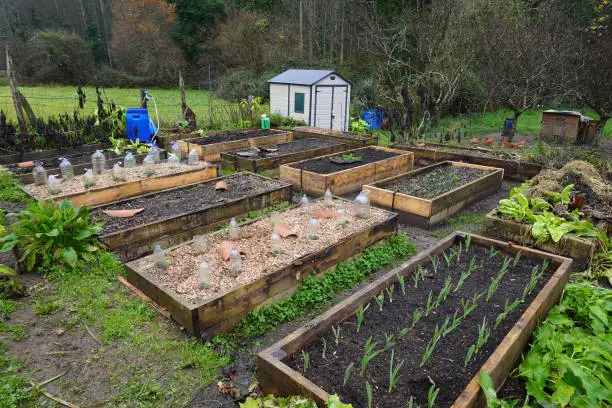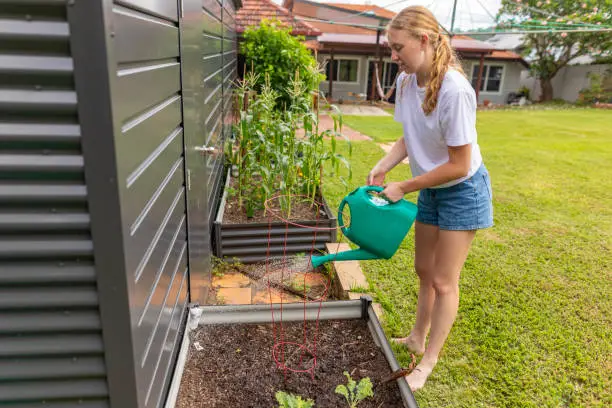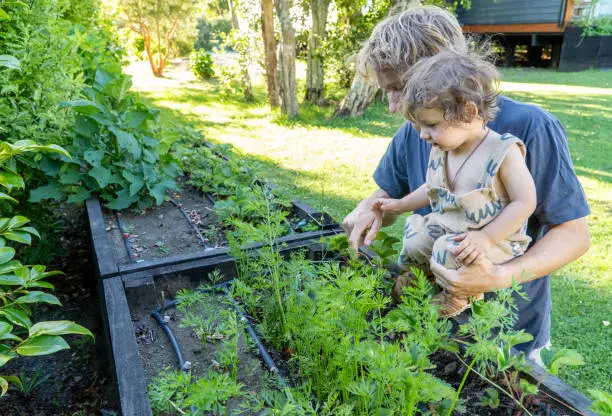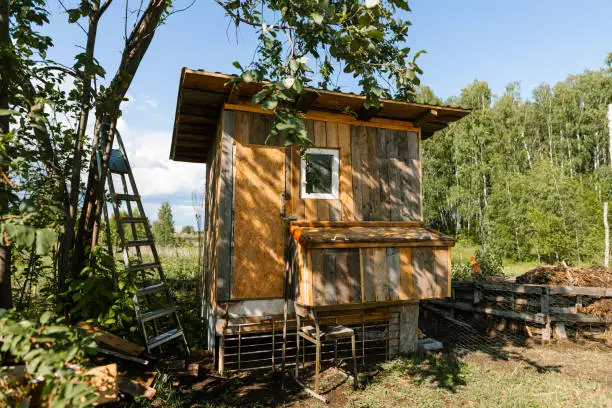Have you ever felt sad seeing your tomato plants eaten by insects? Imagine having unwelcome guests at your party. Do not worry! You can eliminate bugs without chemicals. Discover backyard homesteading companion planting magic.
Companion planting matches plants. Some plants get along and benefit each other. Everyone benefits from pairing your best friend with a funny person.
Consider marigolds. These colorful beauties are garden party bouncers and eye candy. Marigold fragrance repels worms and other pests. Plant them near tomatoes or beans to reduce gatecrashers eating your produce.
Basil protects tomatoes and tastes delicious in pesto. The pungent basil smell confuses aphids and whiteflies, making it difficult for them to find their favorite prey. Additionally, growing basil near tomatoes enhances their flavor. A win-win!
The dynamic duo is carrots and onions. Onions attract onion flies and carrots carrot flies. However, their powerful scents confuse pests when planted together.
Have we got cabbage worms? Consider planting thyme nearby. Thyme’s pungent smell deters cabbage leaf-eating insects.
Beetles and aphids can swiftly destroy squash and cucumber plants. Nasturtiums save! These colorful flowers entice pests away from your primary plants with appealing leaves.
Radishes also help traps! They attract flea beetles more than any other garden plant and can keep them away from eggplants and peppers, which they love.
Be careful with mint! Unchecked mint spreads quicker than family reunion talk. Its strong smell deters ants and aphids when carefully placed around garden beds.
Remember dill! Ladybugs, which consume aphids and repel spider mites, are drawn to this feathery grass.
When planted near picnic areas or garden entrances, lavender repels insects on warm evenings and makes great sachets.

Rosemary’s pungent oils prevent many bugs, especially cabbage moths, whose larvae destroy leafy vegetables like kale and collards!
Yarrow attracts predatory wasps that eat many common garden pests, lowering pest populations naturally without any additional intervention beyond planting!
Backyard Homesteading: Making Organic Pesticides
Like cooking, good ingredients make all the difference in gardening. You wouldn’t eat a salty cake; your plants don’t want harmful chemicals. Let’s make organic pesticides as suitable for your garden as grandma’s apple pie.
Garlic Spray: Pest Vampire Slayer
Remember how garlic repels vampires in movies? Well, bugs benefit, too. Crush a couple of garlic cloves and combine with water. Leave it overnight—it is less flavorful than marinating chicken wings. After straining, pour the mixture into a spray bottle. Spray your plants’ leaves, where bugs prefer to eat.
A Spicy Solution: Chili Pepper Spray
Get this if you enjoy the heat. Chili pepper spray can burn your mouth and prevent pests. Blend fresh chili peppers with water and soak for an hour. Strain the sediments and add a few drops of dish soap to stick to plants. Spray this hot mixture on your plants and watch bugs flee faster than you can drink milk after eating a ghost pepper.
Neem Oil: Nature’s Multi-Tool
Gardeners use neem oil like duct tape—it cures practically everything. This natural oil treats aphids, mites, and fungi! Neem oil and water should be mixed according to the bottle (2 teaspoons per gallon). Emulsify with gentle liquid soap. Apply every two weeks or after heavy rains.
Simple yet Effective Soap Spray
Simple solutions work best. Some of our tricks include soap spray. Mix one tablespoon of Castile-like mild liquid soap in a spray bottle with 1 quart of water. Shake thoroughly and apply to insects or plant damage. This treatment suffocates aphids without hurting plants.

Not Just for Smokers: Tobacco Tea
You may not have considered tobacco tea! Put tobacco leaves in water overnight to make weak (light brown) tea. The liquid from straining the leaves can be sprayed on infested plants; however, nicotine can be highly harmful.
Diatomaceous Earth: Fossil Flour
This lovely thing is ground fossils! Ants and beetles die from diatomaceous earth, while humans are unaffected. Spread this powder around plant bases or on pests.
Natural Bodyguards: Companion Planting
Consider companion planting like hiring bodyguards for your veggies—marigolds repel worms, and basil repels tomato-eating insects! Planting some plants together generates natural insect barriers without intervention (maybe once while planting).
Essential Oils for Plant Aromatherapy
Essential oils repel bugs, in addition to diffusers! Mix several drops of peppermint and lavender oils with water and soap in a spray bottle to evenly distribute them on foliage.
Uncle Joe always had an ancient remedy for everything. His prediction was correct! These natural pest control methods are safe for us and our gardens in place of harsh pesticides.
By using natural ways, you’re protecting your crops and helping the environment—a win-win!
If you see invaders eating your greens, remember you have an arsenal in your kitchen cabinet to rescue the day!
Have you ever wondered if herbs could protect your garden? They can! Planting the correct herbs and flowers creates a rich, beneficial garden ecology.
Get into some dynamic duos. Consider marigolds. The bright flowers aren’t just for show. Their smell repels tomato and bean-loving nematodes. Plant them together to reduce pests eating your veggies.
Basil and tomatoes are another match made in heaven. The pungent basil smell confuses aphids and whiteflies, protecting tomatoes. Basil boosts tomato flavor, making caprese salads even better.
Carrots and onions go well together. Pests that adore carrots are confused by the onion’s smell. It hides veggies naturally!
Are you dealing with cabbage worms? Place thyme close. Thyme’s powerful aroma deters these pests, preventing cabbages from becoming caterpillar food.
New squash and cucumber friends: nasturtiums. These colorful blossoms deter pests from your favorite plants. Radishes attract flea beetles from eggplants and peppers.
Mint is rebellious. Although it spreads widely, its powerful scent deters ants and aphids. Plant it in containers to control it and safeguard your garden.
Remember dill! Ladybugs eat aphids on this herb. Less pests, more ladybugs!
It is not just humans who enjoy lavender’s relaxing aroma. Put it near garden gates to avoid mosquitoes and enjoy its fragrant blossoms.
Double-duty Rosemary. Its vital oils keep cabbage moths away from kale and collards.
Yarrow attracts predatory wasps that control garden pests despite its fragility. Imagine tiny, flying garden guards.
Make organic insecticides at home for added protection. Garlic, chili pepper, and neem oil are safe and effective plant sprays. These natural remedies keep your garden healthy and chemical-free.
With companion plants and organic practices, your garden becomes a resilient, thriving oasis—like an eco-friendly security system that beautifies and protects your backyard property.





Leave a Reply
You must be logged in to post a comment.